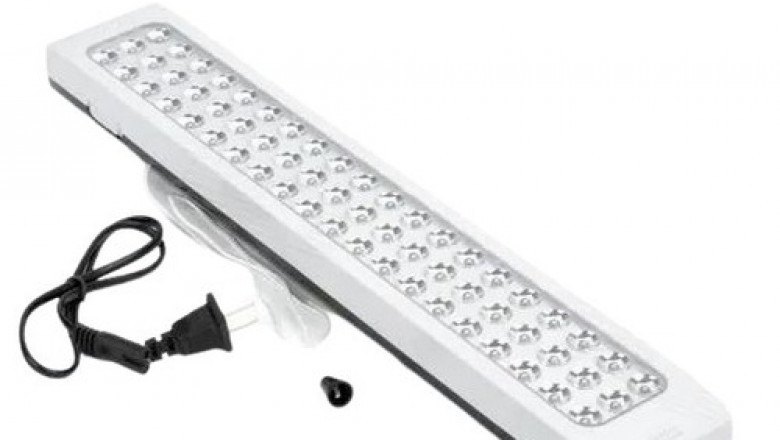views
Emergency Lights Market: The Rise of Wireless Emergency Lighting Systems

Introduction
The Emergency Lights Market is experiencing significant growth, driven by rising safety regulations, increasing urbanization, and advancements in lighting technologies. One of the most transformative innovations in this space is the emergence of wireless emergency lighting systems, which offer numerous benefits over traditional wired setups. As businesses and public infrastructure prioritize efficiency, reliability, and ease of installation, wireless emergency lights are becoming a preferred choice. This article explores the advantages of wireless emergency lighting, challenges in implementation, and the key manufacturers leading the charge in this evolving market.
Emerging Technologies: Wireless Emergency Lighting Systems
Wireless emergency lighting systems are revolutionizing safety lighting by eliminating the need for complex wiring and providing seamless operation during power failures. These systems typically utilize radio-frequency (RF) communication, mesh networking, and battery-powered LED technology to ensure uninterrupted lighting in critical situations.
With the integration of smart sensors, IoT connectivity, and cloud-based monitoring, wireless emergency lighting allows for remote control and predictive maintenance, enhancing operational efficiency. The ability to automate testing and provide real-time diagnostics reduces manual intervention, making them an attractive option for large-scale applications such as hospitals, commercial buildings, and industrial facilities.
Advantages of Wireless Over Traditional Wired Emergency Lights
Wireless emergency lighting systems offer several key advantages over traditional wired solutions, making them an ideal choice for modern infrastructure.
1. Easy Installation and Cost Savings
One of the primary benefits of wireless emergency lighting is the elimination of complex wiring. Traditional wired systems require extensive cabling, conduits, and labor-intensive installations, which can be expensive and time-consuming. Wireless systems, on the other hand, rely on battery-powered units and RF communication, allowing for quick deployment with minimal disruption to existing infrastructure.
2. Enhanced Flexibility and Scalability
Wireless emergency lighting provides greater flexibility in terms of placement and expansion. Since they do not rely on fixed wiring, they can be easily relocated or added to a system without requiring significant modifications. This makes them ideal for businesses planning future expansions or renovations.
3. Remote Monitoring and Smart Control
Modern wireless emergency lighting solutions come equipped with IoT-enabled features, allowing facility managers to monitor and control lighting systems remotely. Real-time diagnostics and automated self-testing help detect faults early, reducing maintenance costs and ensuring compliance with safety regulations.
4. Energy Efficiency and Sustainability
Wireless emergency lights often use LED technology, which consumes significantly less energy than traditional incandescent or fluorescent lights. With the ability to optimize energy usage and integrate with renewable power sources, wireless emergency lighting contributes to sustainability goals and energy savings.
5. Improved Reliability and Safety
With features like automatic fault detection, battery backup status updates, and fail-safe operations, wireless emergency lighting systems ensure a higher level of reliability during critical situations. The ability to operate independently of external power sources further enhances their effectiveness in emergencies.
Challenges in Implementation and Potential Solutions
Despite their numerous advantages, wireless emergency lighting systems face certain challenges that need to be addressed for wider adoption.
1. Signal Interference and Connectivity Issues
Wireless communication can be affected by signal interference from walls, metal structures, or electronic devices, leading to unreliable operation.
Potential Solution: Manufacturers are developing mesh networking technology, where multiple devices communicate with each other to create a self-healing network. This ensures reliable data transmission even in challenging environments.
2. Battery Life and Maintenance Concerns
Wireless emergency lights rely on battery power, which requires periodic maintenance and replacement to ensure continuous operation.
Potential Solution: Advancements in long-life lithium-ion batteries and energy-efficient LEDs are helping to extend battery life. Additionally, smart systems with real-time battery health monitoring can provide alerts for timely maintenance.
3. Initial Investment Costs
While wireless emergency lighting systems reduce installation costs, their initial purchase price may be higher than wired alternatives.
Potential Solution: Over time, the reduction in maintenance costs, energy savings, and flexibility of wireless systems offset the initial investment, making them more cost-effective in the long run.
4. Regulatory Compliance and Standardization
Wireless emergency lighting systems must comply with regional safety regulations and performance standards, which may vary across different markets.
Potential Solution: Industry collaborations and government initiatives are driving the development of unified standards, ensuring compatibility and compliance across various jurisdictions.
Key Manufacturers Developing Wireless Emergency Lighting Solutions
Several leading manufacturers are investing in research and development to enhance wireless emergency lighting technologies. Some of the key players in this market include:
1. Acuity Brands Lighting, Inc.
Acuity Brands offers a range of smart emergency lighting solutions with advanced wireless capabilities. Their products focus on energy efficiency, remote monitoring, and IoT integration to provide seamless operation.
2. Eaton Corporation
Eaton has developed Connected Lighting Systems that utilize wireless communication for enhanced safety and control. Their solutions cater to commercial, industrial, and public infrastructure applications.
3. Signify (formerly Philips Lighting)
Signify is a global leader in intelligent lighting solutions, including wireless emergency lighting systems that offer smart connectivity and automation features for increased reliability.
4. Hubbell Lighting
Hubbell Lighting focuses on innovative emergency lighting solutions, incorporating wireless monitoring and cloud-based management to improve operational efficiency.
5. Legrand SA
Legrand has introduced wireless emergency lighting systems that emphasize modular design, ease of installation, and compliance with safety standards in different markets.
6. Zemper
Zemper specializes in high-performance emergency lighting solutions, integrating advanced wireless technology to enhance system reliability and energy efficiency.
Conclusion
The emergency lights market is undergoing a major transformation with the adoption of wireless emergency lighting systems. These systems offer significant advantages over traditional wired solutions, including easy installation, remote monitoring, scalability, and enhanced reliability. However, challenges such as signal interference, battery maintenance, and regulatory compliance need to be addressed for broader market penetration.






















Comments
0 comment